This Little-known Valley in California Has Stunning Springtime Wildflowers and a Chic, Revamped Motel
In Northern California's Cuyama Valley, there's a growing community of hoteliers, winemakers, and artisans.
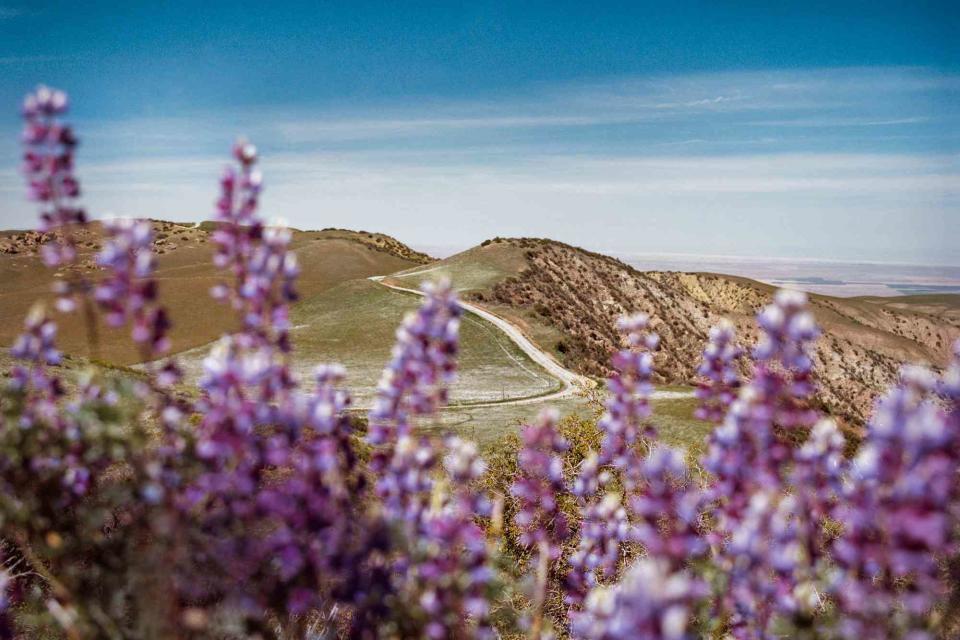
Jessica Sample
Wildflowers at Bitter Creek National Wildlife Refuge, near central California’s Carrizo Plain.I must have been about 10 years old when I first glimpsed the Cuyama Valley. My family and I were driving home from my aunt’s place in northern California when, about two hours north of Los Angeles, my father spontaneously decided to turn off the main highway. What I most vividly recall, almost three decades later, was realizing that I was suddenly somewhere quite different from anywhere I’d ever been.
There were windswept plains, beautiful and desolate, flanked by two mountain ranges — one deeply creased and barren, the other scrubby and oaky, golden and green. Very occasionally, we saw signs of human habitation along the two-lane road. It was as though we had stepped not merely back in time but outside of it.
I have returned to this empty-seeming place over the years, most often to pitch a tent on the Carrizo Plain — one of the last remaining ancient grasslands in the United States. Carrizo is one valley over from Cuyama, and both are famous for the explosion of spring wildflowers that, after a rainy winter, can turn into glorious super-blooms, like some giddy god took a paintbrush to the land.
Flowers are the big draw here, although they’re fleeting, lasting only a few weeks in the spring. Rough camping on the plain can be a tough sell. Usually, when I drove out, I went alone.
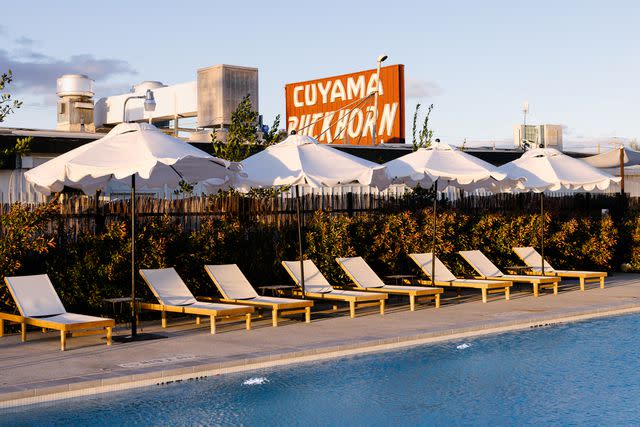
Jessica Sample
The pool at Cuyama Buckhorn, a recently revamped 1950s motel.Even when I was away from the place, I kept checking in on it, via message boards and wildflower hotlines. This was likely why my Instagram algorithm showed me the Cuyama Buckhorn, a recently updated motel in the town of New Cuyama. It looked charming, desert-chic, and much cozier than camping — the kind of place I might bring my wife and two young kids. So I did.
Cuyama Buckhorn opened in 1952, with a design by George Vernon Russell, the architect behind the Flamingo Hotel in Las Vegas and other classic mid-century buildings. Today the Buckhorn’s motor court has been transformed into an oasis dotted with olive trees, lounge chairs, and fire pits where, come nightfall, guests roast s’mores and sip mezcal. My family and I arrived before check-in time, so we had lunch at the Buckhorn’s restaurant. A few guys from a Caltrans road crew sat at the counter, wolfing down burgers; a vinyl booth was filled with sunburned, binocular-toting retirees. An obscure Townes Van Zandt track wafted through the speakers. The place felt shiny and new, but also well-loved.
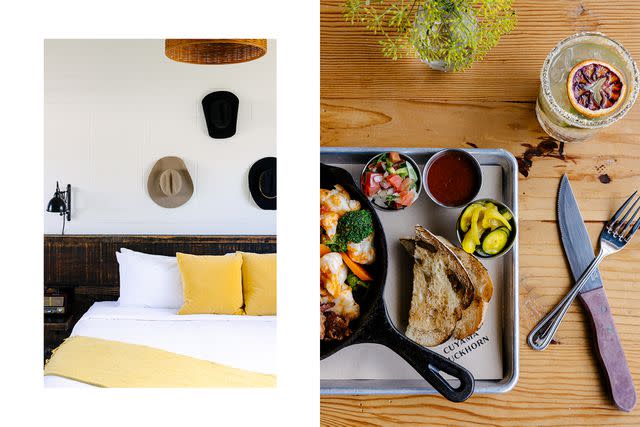
Jessica Sample
From left: A guest room at Cuyama Buckhorn; the smokehouse platter at the hotel's restaurant.Our room was peppered with local character: an old cowboy hat, a well-worn trail guidebook. That evening — and every evening — we sat on the patio outside our room and watched the light play across the sweep of the plain. Over the next few days, we gave in to the charms of the high desert valley as they unfolded at their natural pace — slowly and deliberately. We meandered up rough roads that disappeared into the hills and led to hidden, wildflower-filled washes, oak woodlands, and secret creeks.
But the greatest asset of the place was soon revealed: the folks who call Cuyama home. Jeff Vance and Ferial Sadeghian, the architect-designers and business partners who own the Buckhorn, discovered this six years ago, soon after they bought the motel. Vance, who grew up in Los Angeles, fell hard for the region in his youth, and returned to it often. Then he met the Iran-born Sadeghian, who dreamed of opening a hotel akin to the little chef-owned properties she had once visited in Provence. One day, out for a drive, they saw that the boarded-up Buckhorn was for sale.
A few weeks after they’d bought the property there was a gathering for farmers and ranchers at the Blue Sky Center, a rural-development nonprofit down the street. There, Vance and Sadeghian met the vintners of the wine they’d soon be selling, the farmers of the produce they’d feature on their menu, the ranchers whose beef they’d buy.
“We’re all up here together,” Vance told me one night at the Buckhorn bar. “If somebody has a problem, it’s everyone’s problem.” Sadeghian jumped in. “I was driving up here one day and realized, if something goes wrong, I would rather get stuck here than anywhere. There are just so many people around I could call on to help.”
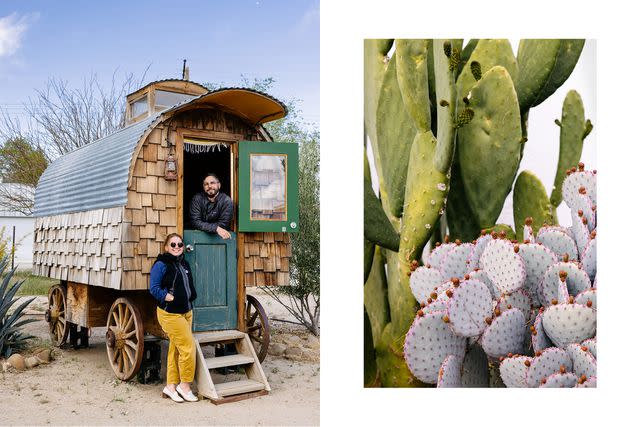
Jessica Sample
From left: Em Johnson and Jack Forinash, directors of the Blue Sky Center, a community-development organization in the Cuyama Valley; cacti on the grounds of the center.Much of the credit for this communal feeling goes to the Blue Sky Center, which occupies several large buildings erected by the Richfield Oil Corporation in the early 1950s. Richfield became ARCO, and in the 1970s, ARCO left, along with most of the region’s jobs. Still, Cuyama held on, primarily through agriculture. (It’s said the baby carrot was invented here in 1984.) But betting on crops is perilous in a place where rainfall averages just eight inches a year — which is where Blue Sky comes in. Its goal is to both support the community and expand it, pulling in creative entrepreneurs and tourists alike. It even hosts paying guests in a covered wagon and similar-looking huts.
One afternoon, I toured a group of former Richfield buildings with Jack Forinash, Blue Sky’s executive director. The buildings are now filled with artisans’ workshops: High Desert Print Co., a screen-printing and design outfit; Warrior Wagons, which restores classic “woody” cars; and Cuyama Beverage Co., a mead maker. All of these, Forinash suggested, were living, breathing business cards for the community. The labels of those mead bottles, for instance, make hidden Cuyama more visible when the drink is sold in boutiques in Los Angeles or Santa Barbara.
Plenty in Cuyama is still off the beaten path, though. Another afternoon we drove to a hilltop vineyard called Condor’s Hope. When Steve Gliessman and Robbie Jaffe first planted vines in 1995, the California condor — the largest bird in North America — was close to extinction and an aggressive captive-breeding program was under way. Starting in 1992, some of the birds had been reintroduced into a nearby national forest, and the couple would see them flying overhead.
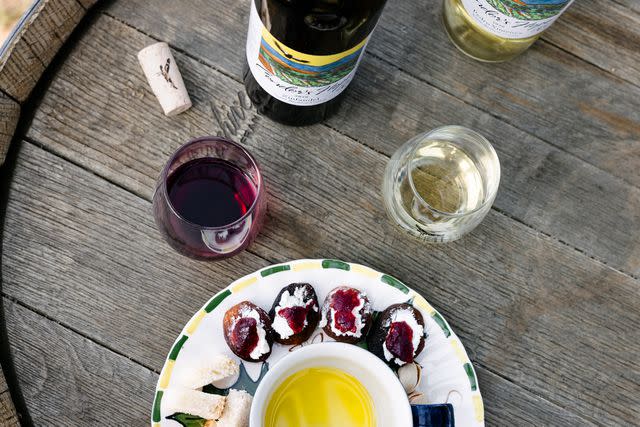
Jessica Sample
A tasting at Condor’s Hope, with the vineyard’s Zinfandel (left) and Pedro Ximénez.Gliessman and Jaffe are agroecologists. The idea is in the title: fold ecology into agriculture, let the characteristics of the land inform what you plant and how you treat it, and you create a system that is no longer working against nature but within it. What this means practically is quite radical. “No, we don’t irrigate,” Gliessman told me as we strolled among his vines, which were gigantic, like gnarled old candelabras. The hardy plants lose fewer grapes than most during prolonged droughts and winter freezes. “The grapes are smaller,” Gliessman explained. “The skins are thicker.” The wine tastes better, too.
Gliessman looked out over his vineyard toward a magnificent valley oak — easily hundreds of years old — where a pair of bluebirds were nesting and where my wife was now resting with our baby son. “I like to think that Robbie and I are old vines,” he said. I thought about the condors, and how, these days, they number in the hundreds in the wild. I knew exactly what he meant.
A version of this story first appeared in the April 2023 issue of Travel + Leisure under the headline "Desert Bloom."
For more Travel & Leisure news, make sure to sign up for our newsletter!
Read the original article on Travel & Leisure.

